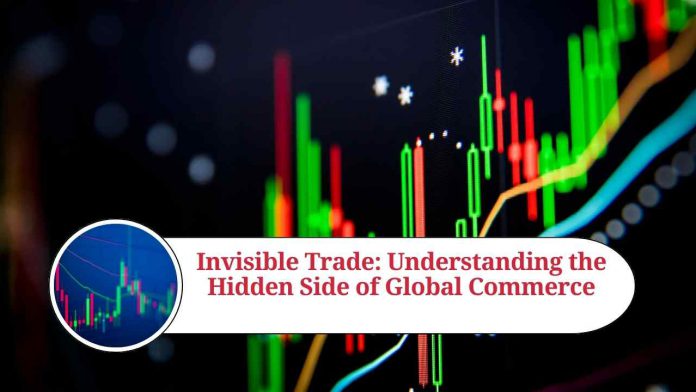When we think of trade, we usually imagine the movement of physical goods across borders – cars, clothes, electronics, and so on. However, there is another type of trade that is just as important, but much less visible: invisible trade. Also known as services trade or intangible trade, it refers to the exchange of services, skills, and intellectual property across borders. In this blog, we’ll take a closer look at invisible trade, its importance, and how it affects the global economy.
What is Invisible Trade?
Invisible trade refers to the exchange of services between countries. These services can include everything from financial services, legal services, and consulting services to education, tourism, and transportation. It also includes the transfer of intellectual property, such as patents, trademarks, copyrights, and software. Unlike physical trade, invisible trade doesn’t involve the movement of goods across borders. Instead, it involves the transfer of information, knowledge, and expertise.
Why is Invisible Trade Important?
Invisible trade is essential to the global economy for several reasons. First, it represents a significant portion of international trade. According to the World Trade Organization (WTO), services trade accounted for 23% of global exports in 2020. This figure is expected to continue to grow as digital technologies enable more services to be delivered remotely. Second, invisible trade plays a crucial role in promoting economic growth and development. Services such as education, healthcare, and telecommunications are essential for building a skilled workforce, improving health outcomes, and connecting people across borders. Finally, invisible trade supports the growth of other sectors of the economy. For example, the finance sector relies on the transfer of financial services across borders, and the tech industry depends on the transfer of intellectual property.
Challenges and Opportunities
Invisible trade presents both opportunities and challenges for countries. On the one hand, it offers opportunities for countries to specialize in services where they have a comparative advantage. For example, India has become a global hub for IT services, while the US and UK dominate the market for financial services. On the other hand, invisible trade also poses challenges, particularly for developing countries. Many developing countries lack the infrastructure, skills, and regulatory frameworks needed to participate fully in services trade. This can result in them missing out on the benefits of globalization.
Conclusion
Invisible trade is an essential and growing part of the global economy. While it may not be as visible as physical trade, it plays a vital role in promoting economic growth and development. As the world becomes increasingly connected through digital technologies, we can expect to see even more growth in invisible trade. For countries to fully benefit from this trend, they will need to invest in the infrastructure, skills, and regulatory frameworks needed to participate in services trade.
Read more useful content:
Frequently Asked Questions (FAQs)
Q: What is invisible trade?
A: Invisible trade refers to the exchange of services, skills, and intellectual property across borders. It includes everything from financial services, legal services, and consulting services to education, tourism, and transportation. It also includes the transfer of intellectual property, such as patents, trademarks, copyrights, and software.
Q: How does invisible trade differ from physical trade?
A: Invisible trade doesn’t involve the movement of physical goods across borders. Instead, it involves the transfer of information, knowledge, and expertise.
Q: Why is invisible trade important?
A: Invisible trade is important for several reasons. First, it represents a significant portion of international trade. Second, it plays a crucial role in promoting economic growth and development. Finally, it supports the growth of other sectors of the economy.
Q: Which sectors of the economy rely on invisible trade?
A: Many sectors of the economy rely on invisible trade. The finance sector relies on the transfer of financial services across borders, and the tech industry depends on the transfer of intellectual property. Education, healthcare, and telecommunications are also essential for building a skilled workforce, improving health outcomes, and connecting people across borders.
Q: What are the challenges of participating in invisible trade?
A: Invisible trade poses challenges, particularly for developing countries. Many developing countries lack the infrastructure, skills, and regulatory frameworks needed to participate fully in services trade. This can result in them missing out on the benefits of globalization.
Q: How can countries benefit from invisible trade?
A: Countries can benefit from invisible trade by specializing in services where they have a comparative advantage. For example, India has become a global hub for IT services, while the US and UK dominate the market for financial services. Countries can also benefit from the growth of other sectors of the economy that rely on invisible trade.




















